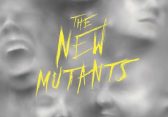A growing nation of genetically evolved apes led by Caesar is threatened by a band of human survivors of the devastating virus unleashed a decade earlier. They reach a fragile peace, but it proves short-lived, as both sides are brought to the brink of a war that will determine who will emerge as Earth’s dominant species.
Set 10 years after its predecessor, 2011’s surprisingly successful Rise of the Planet of the Apes, Dawn begins with an ape dominated opening that has more of a nature documentary feel to it than a Hollywood blockbuster. Caesar and all the other apes look better than ever, thanks to the technical wizardry of WETA Digtal, the company that provided the effects in the visual feasts of Avatar, The Lord of the Rings trilogy, The Avengers plus many more. Credit has to be given to Andy Serkis, the man in the mo-cap suit, for his work as Caesar. It’s a travesty that the man is yet to nominated for an Oscar, but his time could well be now. In an interview about his role, he revealed the difference between this movie and others he’d worked on in the past; the technology is now there for him and other cast members to film on set in suits, rather than in a studio. This means that all the movements and expressions performed by Caesar and Co. are taken directly from the actors, and the likeness of how apes actually move is uncanny.
On the human side, it’s not as impressive. Led by Jason Clarke (who plays John Connor in the upcoming Terminator: Genysis) as Malcolm, his chemistry with Caesar is nowhere near as strong as Franco’s was in its predecessor. Gary Oldman featured heavily in the trailers, and in reality pulls a ‘Bryan Cranston in Godzilla’. Translated, it means he’s seen infrequently for a total of around 20 minutes or less, but he makes the most of every minute. It’s hard to really feel sympathy for him, or any other human for that matter, due to their stories not being fleshed out enough. There’s passing references to personal losses made in the Simian Flu outbreak, but it’s not enough reason to invest time in these people. Make no mistake, this is the apes show, and they’re far more interesting than any human; the best scenes come from their interactions and how they work together to overcome dilemmas.
Where Dawn falters though, is in its pacing. It’s noticeably a film of two halves, with the second hour being the apes v humans battle that many had paid to see. But the first act and a half occasionally feel like a slog, never really advancing the plot. It can be summed up like so: apes dont trust humans, humans gain apes trust, humans lose apes trust, then gain again, apes betray apes trust, humans hate apes. In what seems like a neverending back and forth, the ‘trust’ plot gets a little tedious. The penultimate step though, apes betray apes, is where the film really begins to maintain steam, and this is largely down to the villainous ape, Koba.
Played by relatively unknown Toby Kebbell (Wrath of the Titans, Prince of Persia), Koba is utterly enthralling as the ape with a vengeance. As fans of the first will know, he was subjected to unspeakably cruel acts by humans, and even when Caesar begins to have faith in people, Koba does not forgive so easily. His actions towards both humans and his own kind are some of the most violent seen in a 12A, and completely ruthless; It’s what makes him a top screen villain for 2014.
The action scenes are a highlight too – they take a while to arrive, but when they do, it’s worth the wait. The first assault on the humans is breathtaking, with one tracking shot following Koba on a tank being a real stand out moment of the film. The frenetic and slightly generic final showdown is a change of style from the deliberate narrative unravelling that preceded it, but it’s exhilarating none-the-less.
With showstealing CGI and a powerhouse performance from Serkis as Caesar, Dawn of the Planet of the Apes eventually finds its groove after a first act that almost grinds to a halt to be confidently classed as a success.



























